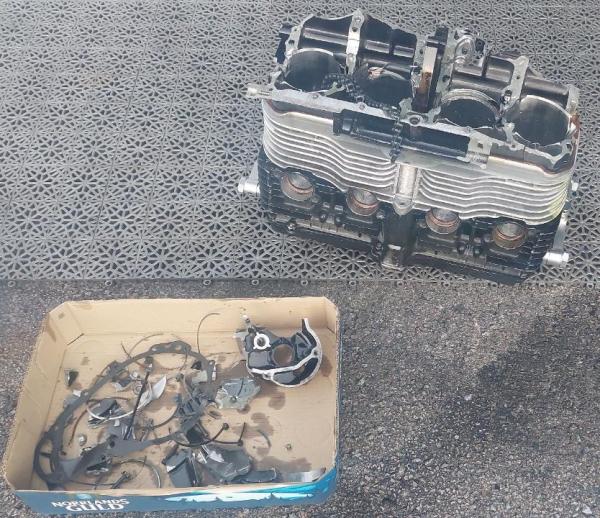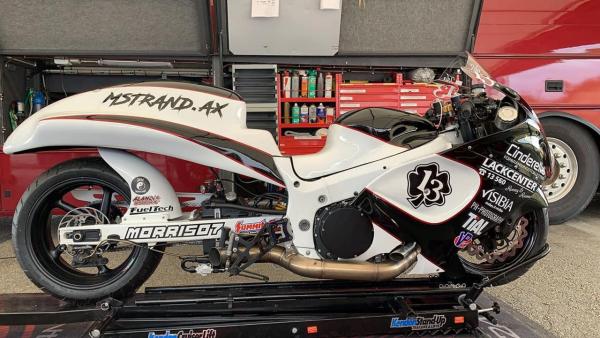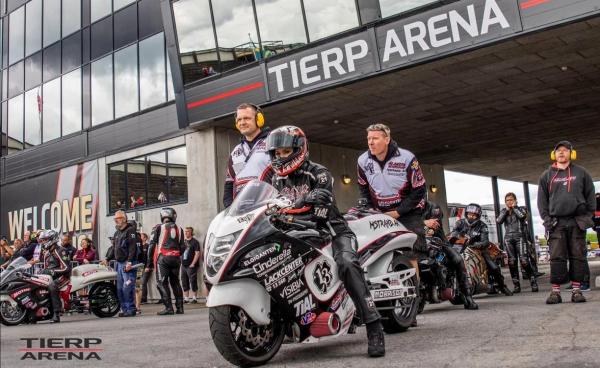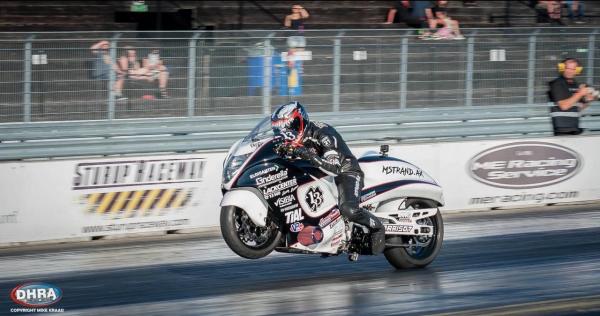

Arttu
Members-
Posts
903 -
Joined
-
Last visited
Content Type
Profiles
Forums
Events
Everything posted by Arttu
-
Usually you pull out the knob and turn it to adjust the pressure. And then push it back to lock it in the position.
-
I think your boost control is supposed to work in following way: When you don't press the button the wastegate works just normal way. On top of the gate there is just atmospheric pressure and the boost is controlled by the spring alone. When you press the button the solenoid activates and lets part of the boost pressure to top of the gate. Gate top pressure pushes the valve close so effectively it adds up on top of the spring pressure. I assume that "manual on/off solenoid" in the diagram is an adjustable pressure regulator? So with that you can adjust how much pressure will be feed on top of the gate and how much boost will increase with the button. Btw, the electronic solenoid seems to be plumbed wrong way around in the diagram. I assume ports 1 and 2 should be swapped. Now it won't release pressure from top of the gate when you release the button.
-

Dyna coil - 1150 - running igniter - mini or standard
Arttu replied to Dukeman's topic in Air Cooled
I guess that note is because the Dyna-S may keep the coil continuosly powered while ignition is on and the engine isn't running. Depending on what position the engine has stopped. And if I recall correctly the stock Suzuki ignition with mechanical advancer can do the same. So when the coil stays powered for longer period, like several minutes, it can get pretty warm. All the 3 Ohm coils will generate roughly same amount of heat in this situation but since those mini coils are physically smaller they dissipate less heat and get hotter. And apparently they can get too hot and damaged. -
I think the generator cover is used just to block the main oil gallery bore in the top case. As far as I recall there isn't any splash feed there. The main gallery supplies the crank bearings and head through head studs. As shown in diagram above.
-
Ok, now your question starts to make more sense As rule of thumb I would aim for 1.0-1.5mm squish band gap. Below that risk for piston-head contact starts to grow. For sure you can go lower but then you have to do your homework carefully. And above 1.5mm is the area where the squish may not work properly anymore and it may even increase risk for detonation. Like said this is just a rough rule of thumb and there are multiple factors affecting to the result. But in any case your 1.9mm squish doesn't sound optimal. Piston dish doesn't need to be round. It's just the easiest shape to machine. Ideally the dish should follow the shape of the combustion chamber on the head. So if you can get that machined it should be good. Just be careful with the piston crown thickness. There seems to be plenty of variation between different pistons on how much "extra" material there is.
-
Only piece of info that I can provide is that stock rods and pistons should be good for at least 300hp. There are quite many gen2 turbo builds around that power range using stock engine internals.
-
I don't think you need to worry about melting the VNT system on bike application. At least mine didn't show any problems after few years in road use. And it probably had pretty high exhaust temps based on how the exhaust valves and ports were looking... Yes, the VNT can provide some benefits but getting the control system working properly may take some effort. And benefits compared to normal turbos might be smaller than you would expect. Mainly because if you try to make the turbo to spool-up early it results high exhaust pressure and typical bike engine really don't like that, especially at low revs.
-

Calico CT2 ceramic coating for combustion chamber
Arttu replied to no class's topic in Forced Induction
I have used Cerakote coating on piston tops once. No problems with it but hard to say if it gave any benefit either. Based on what I have studied about this topic I think it's probably case dependent if these combustion chamber coatings do more good than harm. Seems that on professional race engines they are used quite rarely which probably tells something. On road bikes one question is also carbon build-up. I'm having hard time to believe the coating can make much difference once it gets covered by carbon layer... -
It isn't that straightforward to tell what power some parts can handle since there are multiple other factors affecting too. For example rpms stress the rods more than just power. Hard launches on prepped track are often main reason for breaking cases and so on. But as far as I know stock GSX rods, 493 Katana rods and EFE ones, are often used on 500-600hp Funny bikes. So they really can handle some serious power. If we are talking about GSX cases I think they are still realtively reliable around 500hp. They can handle even more but at 800hp level this kind views tend to get more common.
-
Well, the Katana rods can handle over 500hp so no wonder if they look beefier...
-
Your problem sounds slightly vague. Usually when the clutch slips it's most noticeable on high gear at maximum torque rpm, something around 5000-7000rpm in EFE case. You can try blipping the clutch quickly at full throttle there and try to feel it graps right away when you release the clutch or if it slips there. I have also heard that the 2nd gear can get loose on the shaft but haven't never vitnessed that. I would assume it isn't recovering when it lets go.
-
All right, that makes more sense. So even though the intercooler and engine techically share the same coolant and expansion tank the intercooler has its own radiator and actually separate cooling circuit. So most likely intercooler coolant stays clearly cooler than 80-100°C engine coolant.
-
Hmm... I haven't ever seen an intercooling system that uses engine coolant. Do you happen to have any references to that Audi solution? Any ways, I think there are good changes that the 1.0 tsi cooler cell works well enough for 200hp. One low cost source for cooler cell is some universal air-water intercooler. For example this one should be fine up to 400hp or so: https://www.turbozentrum.de/Watercooled-intercooler-288x235x90mm-66mm They are usually pretty easy to cut and weld so you can integrate the cell on your plenum or wherever you prefer to mount it. One default choice for circulation pump is 1200lph Bosch PCA pump. But that one is relatively big and not exactly cheap. I have used cheapish chinese "DC50" brushless pumps with good results. They are very compact and 1500lph variant has worked fine on +600hp setups. For 200hp you can probably select a lower flow variant to save some current.
-
Air-to-water coolers work well when done correctly. Although my experience is mainly from the drag bikes where the water cooling part is mostly skipped and only water tank is used. On road use cooling the water can be somewhat tricky. On positive side bikes usually run only short periods at full power so there is plenty of time to cool the water between the pulls. So if I were making a road setup I probably wouldn't worry too much about the radiatior size. But instead I would ensure that there is enough water volume to cover full throttle pulls (2-3 liters or more should be fine) and try to avoid engine heat getting into the water. I have run in dyno a couple of road bikes that had only minimal water coolers but additional water tanks instead. And at least in the dyno water was staying pretty cool all the time. So I assume they should work fine on typical road use too. Circuit track or land speed runs could be more challenging cases... One often overlooked detail is the circulation pump. You need pretty high water flow to get good cooling. Regarding that 1.0 tsi cooler. Keep in mind that it's designed for about 100hp only. So if you are going to have significantly more power the cooler may not handle that too well.
-
Well, my typical approach is quite logical and straightforward, I think. First I set the ignition table to some relatively conservative values. But not too retarded since that can drive exhaust temp and pressure high and affect on other tuning too. The boost is also set to lowest possible value. Then I go through the fuel table, whole rpm range and TPS/load positions. Once the fueling starts to be good I play with the ignition timing. This is the tricky part since I don't have too good confidence that I can reliably detect knocking... If the engine setup can be considered as "safe" I just find timing range that gives the best power and use lower end of that range. After that I start upping the boost. I go up with some reasonable steps and fueling is checked and corrected at each step. At this point I usually do only full throttle pulls. For ignition I use some default retard by boost and at certain points I may do some experiments to see how well that default works. But at higher boost levels I'm usually very carefull with timing. That's the basic process in the nutshell. This assumes that all the basic settings are already done correctly and idle, warmup etc. tuning is done separately. Description also skips all the fault finding and troubleshooting which are often major elements of the process Then depending on the case I may spend more or less time by optimizing details like injection timing, acceleration enrichment, boost control parameters and so on.
-
I don't have any comparison data from these two. Closest pair that I can offer is Holset HX35 and Garrett GT2871R on Busa engines. There the Garrett spooled up slightly earlier and probably made a bit more power at the same boost (~1 bar boost, 300-350hp). So I think it's quite safe to predict that the GT2860RS will spool up earlier and be more responsive compared to the HY35. And most likely it's overrall better choice when staying under 350hp power. But it's difficult to say how big the difference will be.
-
As said above, make sure that everything on the bike is in good order. No leaks, loose bolts, etc. Pay special attention on hoses near exhaust and engine since they will most likely get more heat on dyno than on road. My experience is that during pretty much every dyno session some random issues come up. So if you try to minimize these in advance you have better changes to get something useful done instead of troubleshooting issues. Bikes that have been on road after building are usually better in this sense compared to completely fresh builds. Regarding tuning, are you going to do that by yourself or will the dyno guy handle that? Especially if you are going to tune make a plan in advance how you are going to proceed. In any case try to make sure that you have the basics in good shape. Stable fuel pressure, no crank trigger issues, injector parameters set correctly and so on. Since you mentioned boost control it's good to double check that it's really behaving like it should. Troubleshooting that can take plenty of expensive dyno time. If you are using the lockup clutch for controlled launches then you probably need more weights/springs in it for the dyno. And in any case it's a good idea to prepare for harder clutch setup if you are going to increase boost higher than what you have tested before.
-
That looks like a very good info collection! Pity that it's in some weird language... Straight cut primary gears aren't that critical on a road bike. The stock helical gears should be good up to 200hp or so if don't do repeated hard launches on glued track. If your crank is without any welds it's indeed a weak point. I have no personal experiance about them but I have heard that they can get twisted even at stock power. A factory welded cranks that came with later engines can handle decent amount of power if they are in good condition.
-
I would say as long as the hard chrome surface on the rocker is good you can use it.
-
If you get a dash with CAN connection to the ECU then you would connect the wideband to the ECU and the ECU will send the info to the dash. Like mentioned elsewhere based on what I have seen reliability of the LC-2 isn't good. Breaking sensors frequently, showing wrong values and all kind other problems. Seems to apply on some other current products from Innovate too... AEM X-series and Spartan2 from 14point7.com have been good and trouble free choices by this far.
-
As said above, placing the lambda sensor on the dump pipe, about 5-10cm away from the turbo should work ok. You may get some false lean readings at idle but at any higher rpms it should be fine. Regarding the ignition setup with the Microsquirt. First you need a suitable trigger wheel, like described in the answer you have got. I can supply a 24-2 pattern wheel that fits on the oilcooled engines and works with the stock pick-up sensor. Secondly you need a coil driver module to drive the stock coils or active coils with integrated drivers. All this is pretty straightforward so I would add the ignition control straight away if you are going to use the Microsquirt.
-
First time I tried this was kind of desperate attempt after all "normal" tricks including non-sensible hammering and heating had failed. And it shifted the flywheel at first try. But it was a loose crank with a flywheel so it was relatively easy to pour water in and then throw the whole package into freezer. Like said, gets more complicated if the crank is attached on the bike...
-
One trick that has worked for very stubborn flywheels is filling the puller with water and then freezing the whole thing. But naturally that's somewhat complicated with a complete engine or even a bike...
-
I'll try to find time to take some intake pressure plots from an engine simulator software... Yes, there are plenty of interesting stuff in those research papers. But usually you have to read them quite carefully to get a proper idea what has been studied actually. Sometimes they have quite narrow and theoretical scope so their relevance to real life might be limited.





